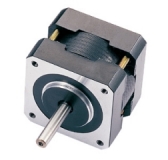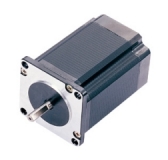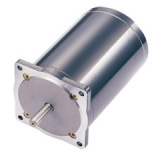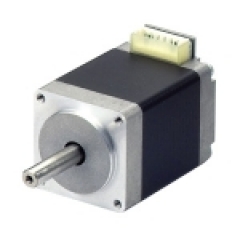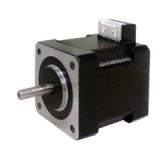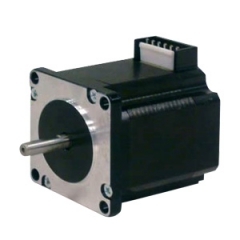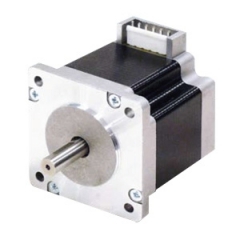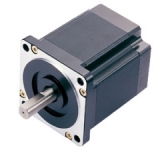Stepper Motor
(Also known as Stepping Motor or Pulse Motor)
A Stepper Motor is an electromechanical device that converts electrical pulse signals into discrete mechanical motion. Each electrical pulse sent to the motor causes it to move by one precise angular step, allowing accurate positioning and speed control without the need for a feedback sensor (an open-loop system). Unlike servo motors that rely on encoders for closed-loop feedback, stepper motors divide one full rotation into hundreds of small, equal steps — typically 200–400 steps per revolution, or even higher in microstepping mode — offering excellent repeatability and low-cost precision motion.
Working Principle
Pulse Input: The controller sends a sequence of electrical pulses to the motor driver.
Magnetic Excitation: Each pulse energizes specific coils in the stator.
Rotor Movement: The rotor (usually a permanent magnet or toothed soft iron) aligns with the magnetic field and moves one “step.”
Continuous Rotation: A stream of pulses makes the rotor rotate smoothly; the direction depends on the pulse sequence.
Speed Control: The frequency of pulses determines the rotational speed; the number of pulses determines the rotation angle.
Key Features
Precise Positioning: Moves in fixed increments; no cumulative error.
Open-Loop Control: No encoder required for basic operation.
Excellent Repeatability: Returns accurately to the same position.
High Torque at Low Speeds: Ideal for direct-drive applications.
Simple Control Logic: Compatible with PLCs or stepper drivers using pulse and direction signals.
Available in Multiple Step Angles: Commonly 0.9°, 1.8°, or even finer via microstepping.
Main Types of Stepper Motors
| Type | Description | Typical Applications |
|---|---|---|
| Permanent Magnet (PM) Stepper | Uses a permanent magnet rotor | Low-cost, small motion systems |
| Variable Reluctance (VR) Stepper | Uses a soft-iron rotor with teeth | High-speed, low-torque systems |
| Hybrid Stepper | Combines PM and VR designs; the most common type | CNC, 3D printers, automation |
| Closed-Loop Stepper (Servo-Stepper) | Adds encoder feedback for servo-like control | Robotics, precise motion control |
Applications
3D Printers and CNC Machines
Robotics and Pick & Place Systems
Automated Conveyors and Packaging Equipment
Textile and Printing Machines
Camera and Optical Systems
Medical Devices and Laboratory Equipment
Advantages
Inherently accurate open-loop control.
Cost-effective alternative to servo systems.
High holding torque at standstill.
Simple, durable, and maintenance-free.
Excellent low-speed stability and repeatability.
Limitations
Torque decreases at higher speeds.
May lose steps under overload (no feedback).
Can generate vibration or resonance at mid-range speeds (solved by microstepping drivers).
ZIPPTORK / ZIPPDRIVE Integration Example
Stepper Motor → coupled with ZIPPGEAR Precision Planetary Gearbox → drives a linear actuator or rotary indexer.
Controlled by a stepper driver or motion controller receiving pulse (PUL) and direction (DIR) signals.
Can be upgraded to closed-loop stepper system by adding encoder feedback for improved performance.

